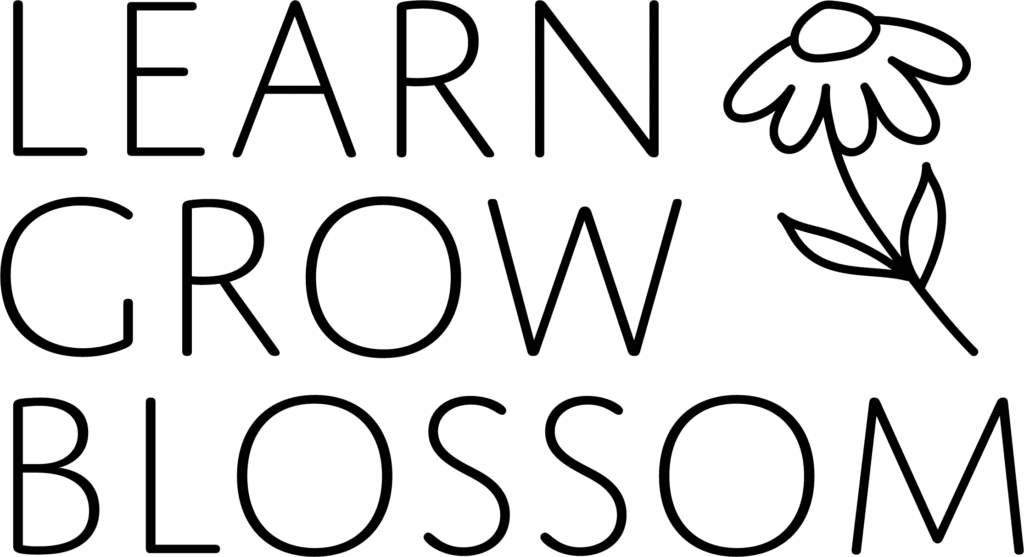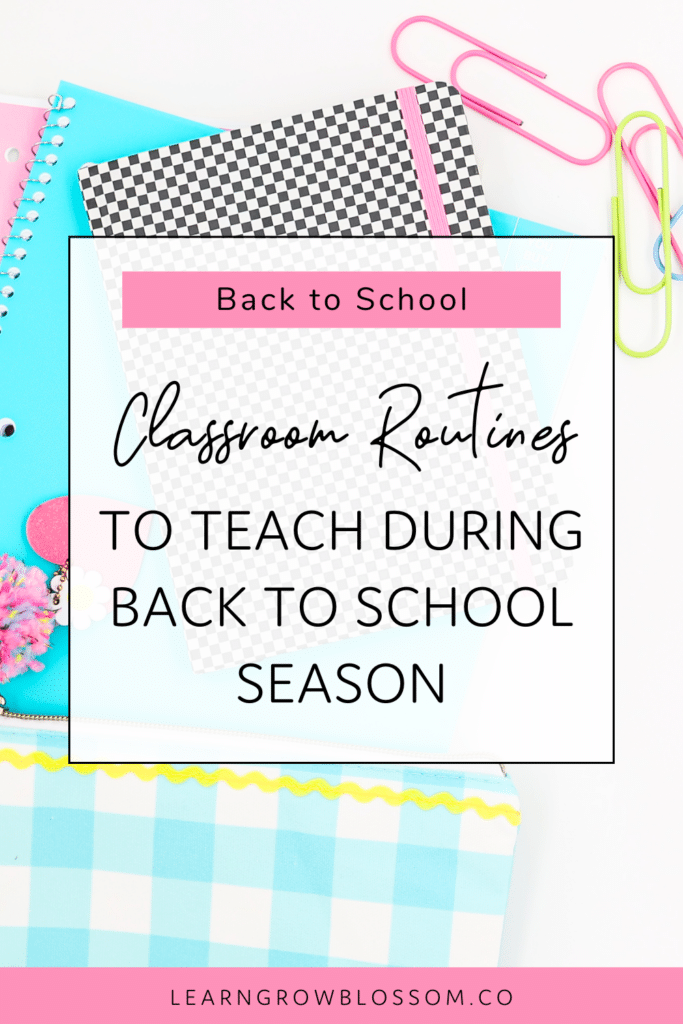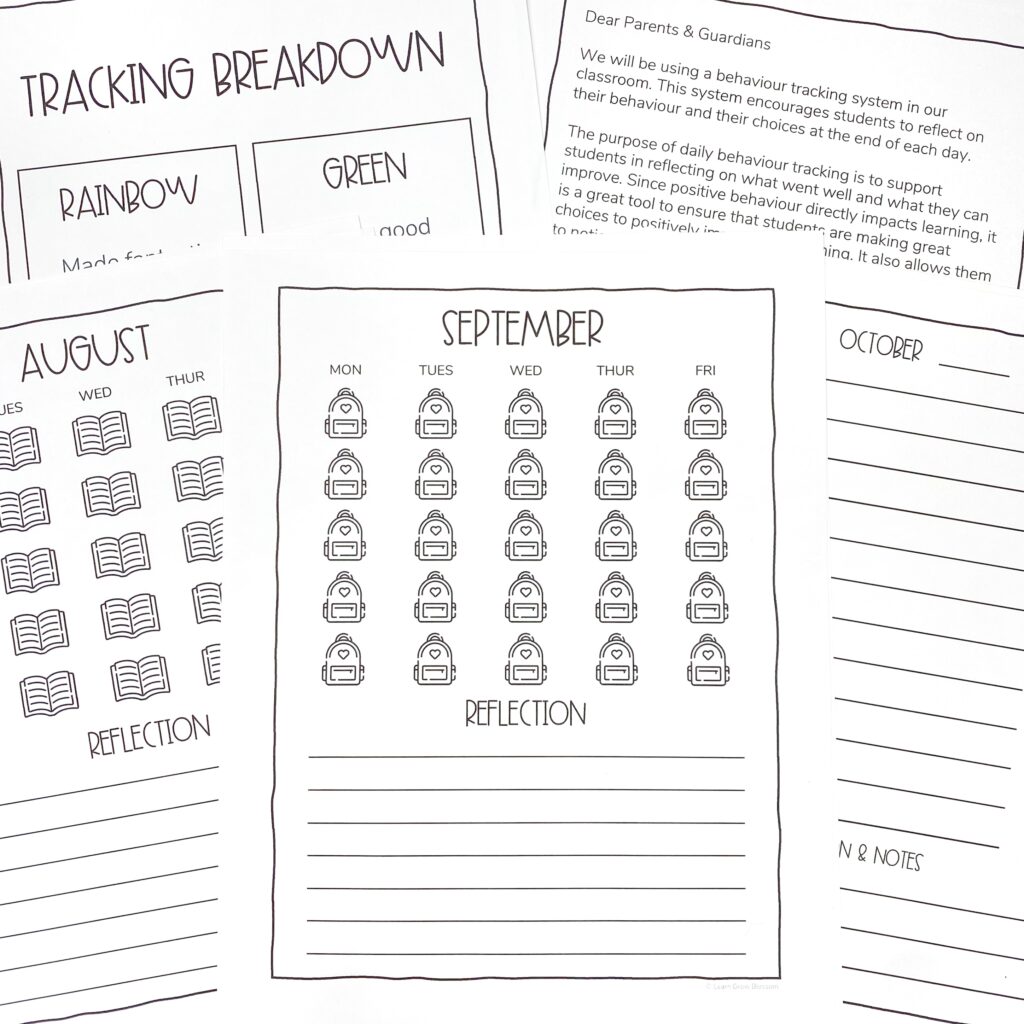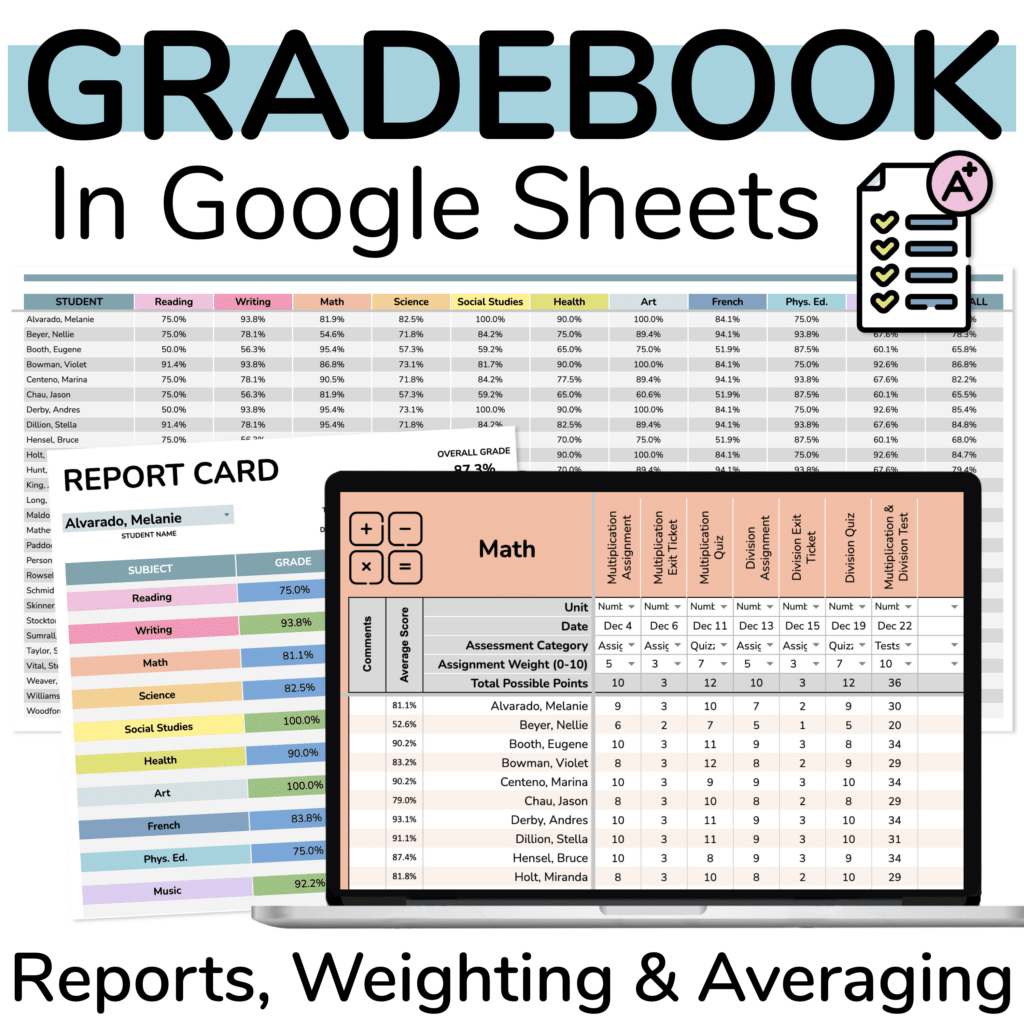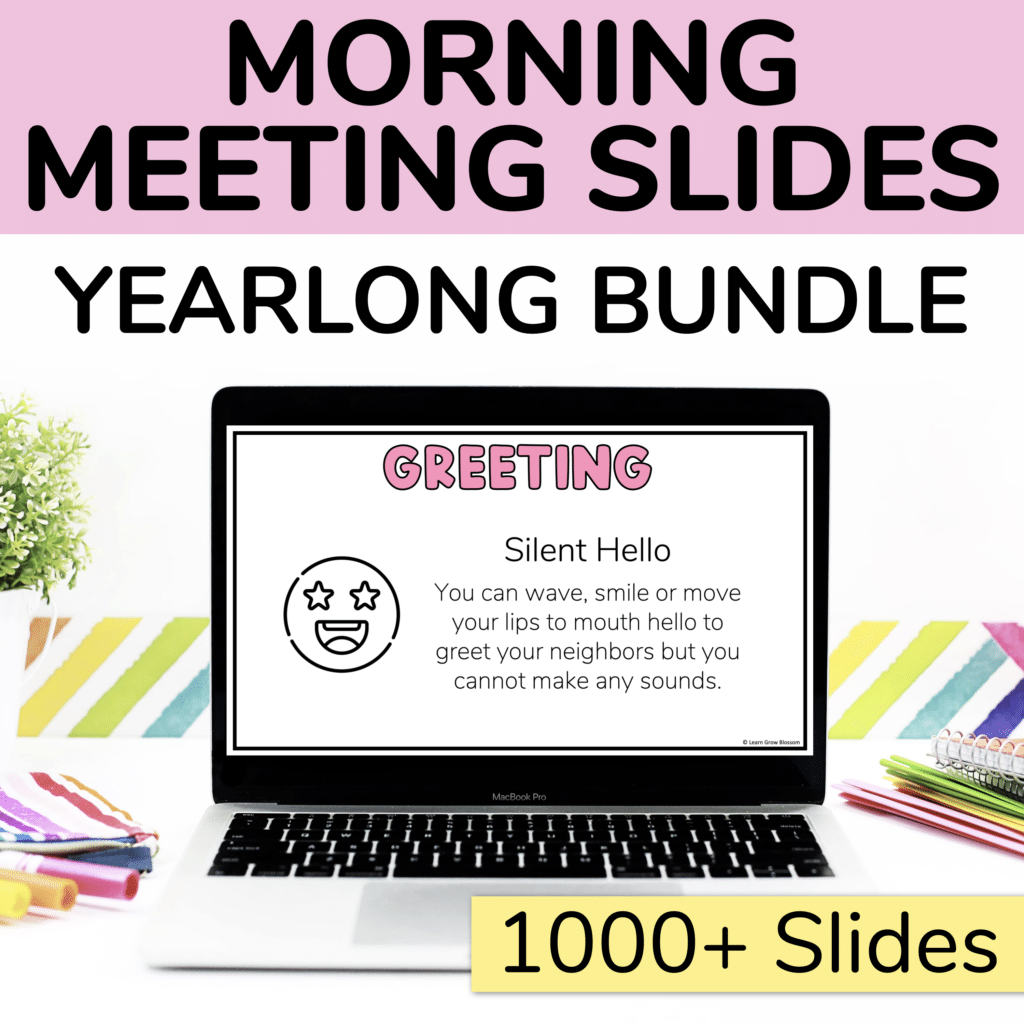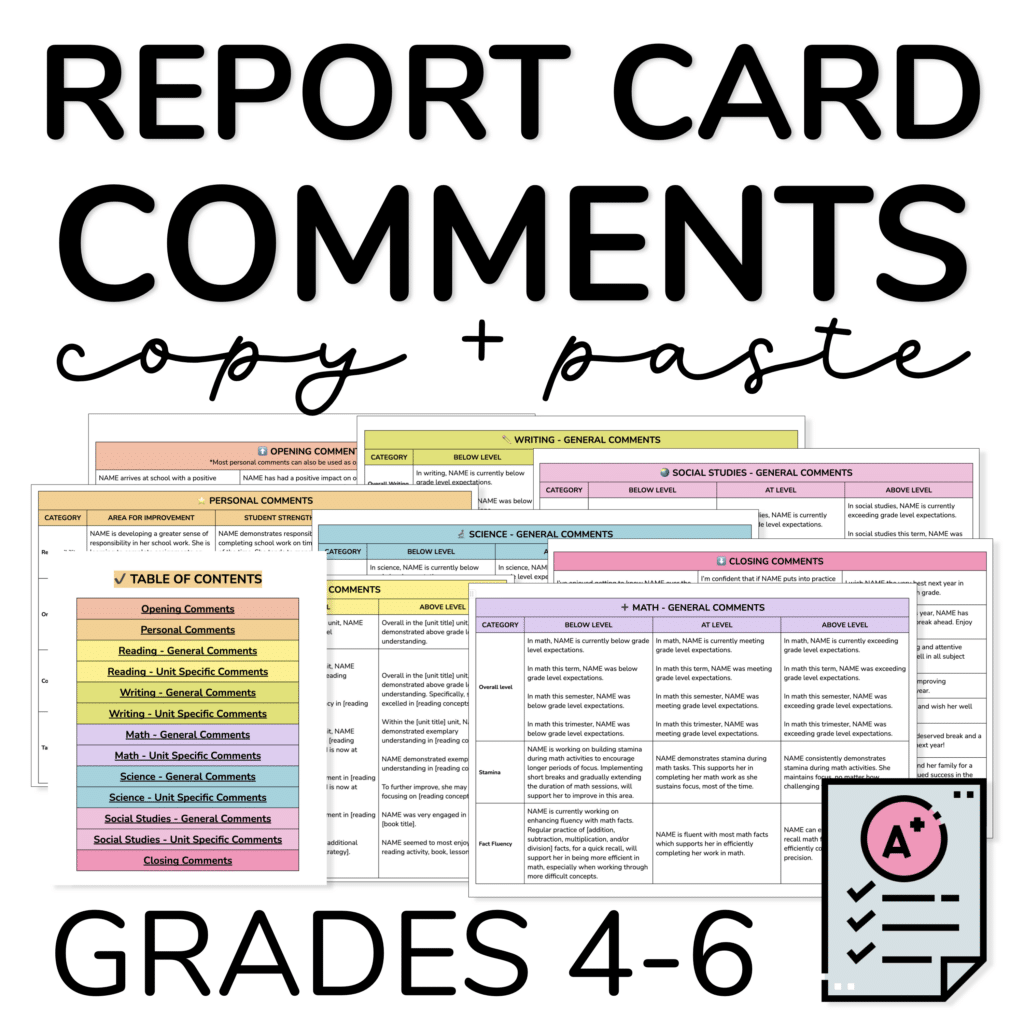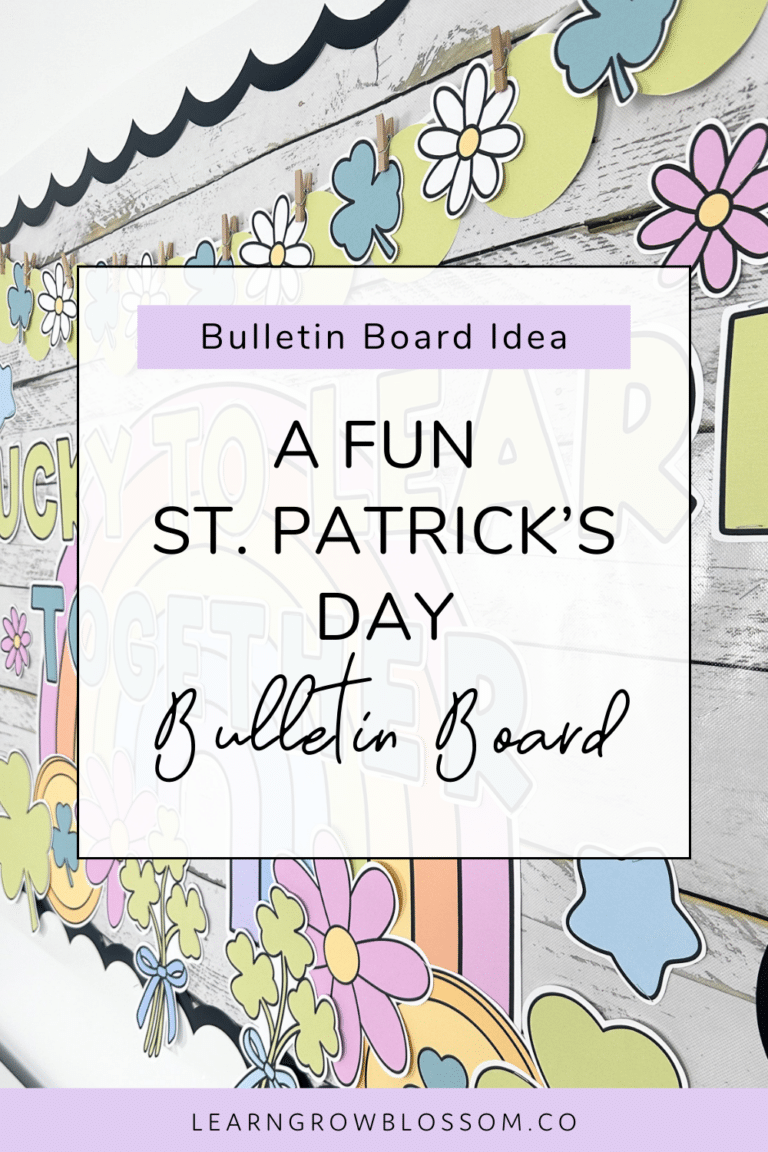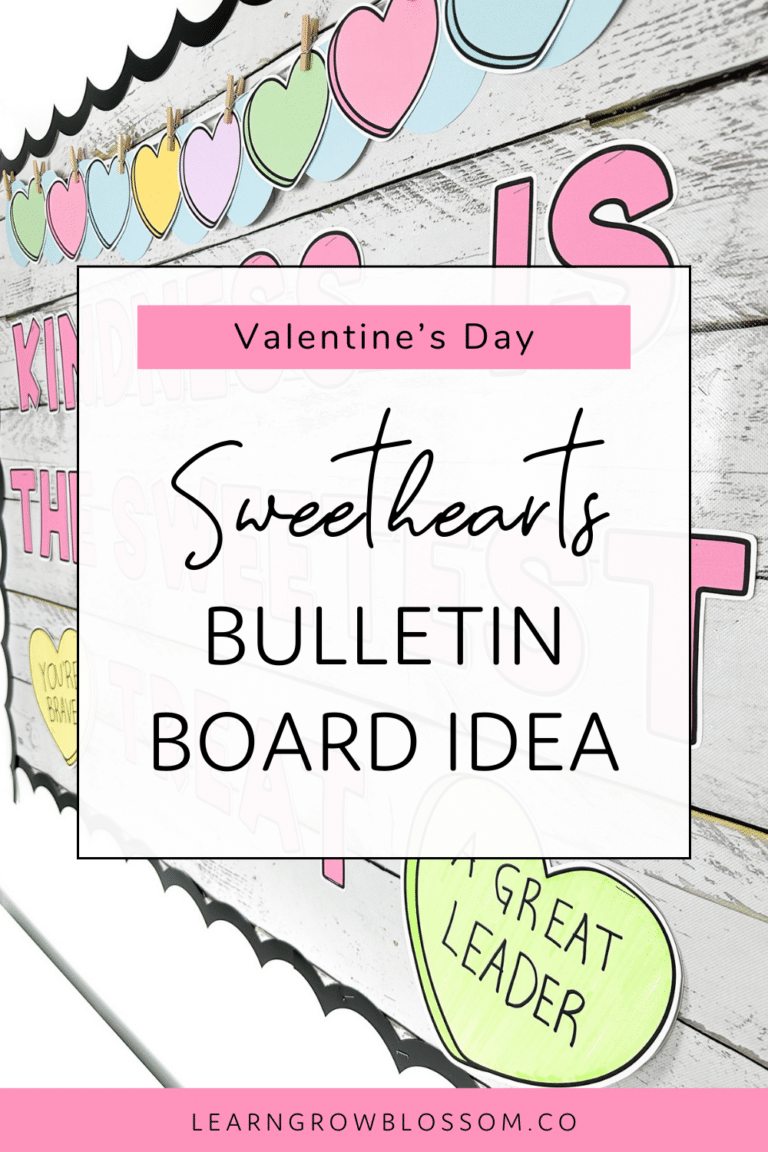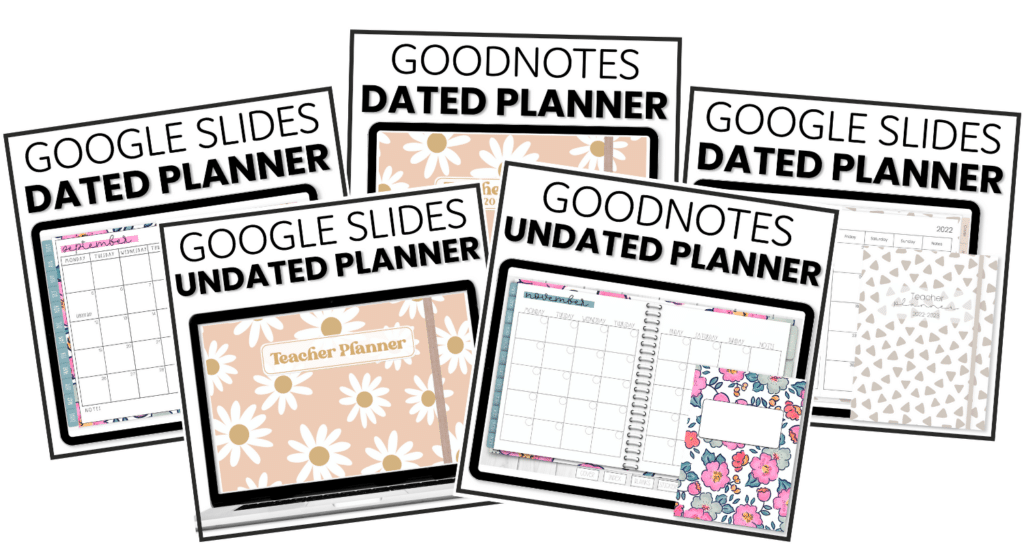You’ll be well on your way to a well-managed classroom by teaching and having students practice these five classroom routines. There is so much to remember at the beginning of the year that it can be easy to forget to teach these crucial classroom routines. Read to learn what those important routines are and get tips for helping students master them in the first weeks of school.
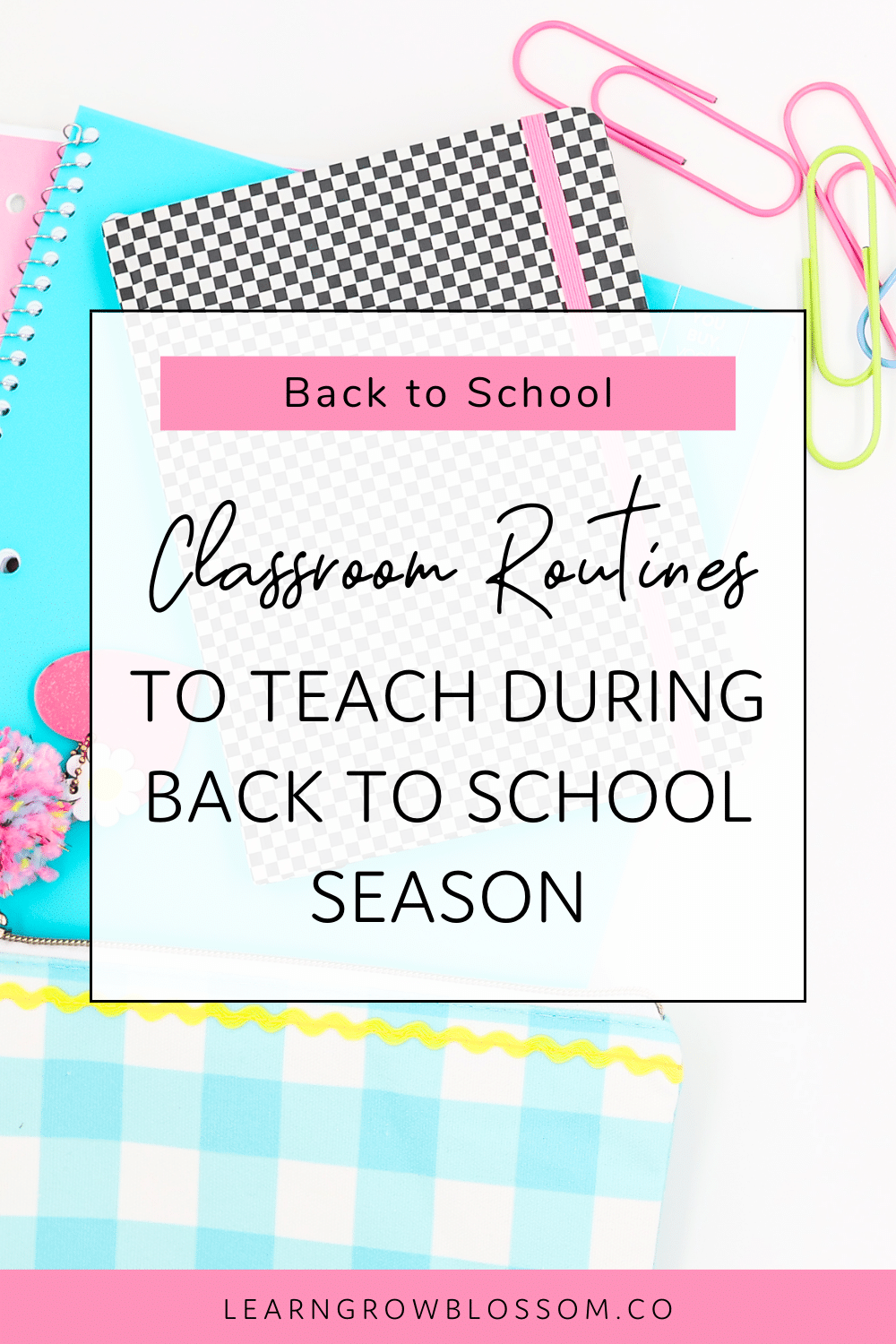
Morning Routine
All classroom routines can look very different in different classrooms. Morning routines are no different. What’s important is to think through what your ideal morning looks like and teach students the expectations and each step of the classroom routines.
Out of all our classroom routines in my class, I would say our morning routine is the most valuable. It sets the scene for the day and helps us start off on the right foot – calm and ready to learn.
This is what students do in our morning routine:
- Enter into the classroom, put things away, and put indoor shoes on.
- Move attendance magnet by answering the attendance question.
- Read the morning message displayed on the class slides. This gives them any important information that they may need to start the day.
- Read the class schedule displayed on the whiteboard.
- Begin working on Must do, May do list by completing any important tasks or assignments before moving on to the choices they can complete when finished their “must dos.”
- Students do must dos and may dos until the school morning announcements.
- After morning announcements, we gather for our daily morning meeting.
Your morning routine may look very different than ours and that is perfectly fine. What matters is thinking through your morning routine (and all classroom routines) so you can teach students each step. Eventually, they will remember and follow it, without prompting.
To teach your morning routine, I suggest using slides with each step mapped out. The slides work as a good reminder for the first few weeks of school. Grab these back to school routines & procedures slides to make it super simple to get these prepped.
Transitioning Between Subjects
Nailing down transitions between subjects can make the difference between a calm day or a chaotic one. Think about how many transitions you have between when students arrive and your first break in the day (whether that’s lunch or recess). On a typical day, we probably have about ten during just this part of the day.
Throughout the whole day, it might be close to 30. From lining up to go to the gym, coming to the carpet for a read aloud, and then transitioning to set work.
Oh, and don’t forget a ton of transitions between math rotations and our Daily 5 rounds. Transitions never stop.
So, what’s my point? The way students transition can truly impact the day in a big way. Explicitly teach and have students practice those transition expectations.
Don’t forget to consider teaching expectations for:
- Lining up
- Grabbing materials
- Handing in work
- Changing spots in the classroom (e.g. meeting at the carpet as a class)
- Cleaning up
- Volume during transitions
- How long should it take
- Cue to clean up (chimes, freeze, etc)
Lunch and Recess Transitions
Just like transitioning between subjects, transitioning to and from lunch and recess also requires explicit teaching and student practice. On top of practicing these transitions, you might consider using a timer to give students a visual to show how long they have.
For example, setting a timer for 5 minutes after lunch to clean up and get ready for the next subject is helpful to ensure clean up is finished and students are ready on time.
Consider teaching and practicing these expectations for recess and lunch transitions.
- Cleaning up
- Getting ready
- Time allotted for clean up, getting ready, etc.
Depending on your class’ energy level, it might be helpful to consider integrating an activity to bring the energy down after recess, before moving into academics. This can be as simple as a short guided meditation, a series of deep breaths, class stretches, or a quick yoga flow.
When Finished Work Early
Another crucial transition to support a well-managed classroom is for students to know the answer to the infamous question, “I’m done my work. What do I do now?” Ideally, by the end of the first week, every student knows the answer to the question.
In my very humble opinion, the best way to break that “what do I do now” habit is to use must do may do lists. It’s a great way to have students finish outstanding work and to provide choices for students that are finished all their “must dos”. You can read more about using this as one of your classroom routines for early finishers here.
As always, students will need to practice using whatever early finisher strategy that you use. They may need reminders at the beginning of the year as they finish work early to know what they should be doing but, with lots of practice, they will start to get it and your class will begin running like a well-oiled machine.
End of Day Routine
Just like a morning routine, end of the day routines will be different from classroom to classroom. For an idea of what might be included in an end of the day routine, I’ve provided an example below.
In my grade four class, this is what students do in our end of day routine:
- Clean up materials and classroom.
- Complete group leadership jobs that apply at the end of the day (sweeping, resetting the attendance magnets, turning off the lamps, plugging in Chromebooks) Learn more about running group jobs in the classroom here.
- Complete daily behaviour tracking and raise their hand to have it checked. When they get the thumbs up, they put their tracking away.
- Write agenda message.
- Stack chairs and get ready in the hallway. Line up until the bell rings.
The key to a good end of the day routine is having every step outlined and lots of student practice following the steps in order. After some time, your students will go through these classroom routines without prompting or reminders.
Using Slides to Teach Classroom Routines
When teaching these important classroom routines, using slides to support students in moving through your routines during the first week or two is helpful to remind them of all the expectations.
Want pre-prepped slides so you don’t forget to teach any of these crucial classroom routines? Check out these best-selling routines & procedures slides for the first weeks of school. All you need to do is add in our expectations and the steps you want students to take for your routines, practice, practice, practice and you’re on your way to a smooth-running classroom.
